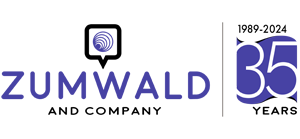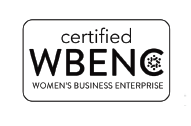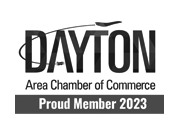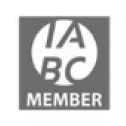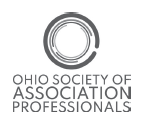How NOT to open a speech + some inspiration
When you’re preparing an important speech or keynote presentation, do you tend to default to one of these four opening lines?
- You begin with a long line of thank-you’s to people we may or may not know.
- You tell a joke you found online the night before.
- You share the process you used to prepare today’s presentation.
- You apologize for your boilerplate bio the event planner just read to us – in monotone – to introduce you (even though you obligingly emailed it upon the planner’s request).
 Remember: When you open a speech, the first thing you say matters!
Remember: When you open a speech, the first thing you say matters!
Don’t squander your opening lines on platitudes, or you’ll have to work that much harder to get the audience’s attention as it drifts farther and farther away.
Instead, command people’s attention:
- Give them the unexpected.
- Start with an opening that dazzles.
- Say something that moves everyone to the edge of their seats because they don’t want to miss what you have to say.
Need some inspiration?
If you’re wondering how to begin your next speech, check out the opening lines from these four of my client keynotes that won Cicero Speechwriting Awards from Vital Speeches of the Day.
“Here’s to the crazy ones. The round pegs in the square holes. The ones who see things differently.
“They’re not fond of rules. And they have no respect for the status quo.
“And while some may see them as the crazy ones, we see genius.
“Because the people who are crazy enough to think they can change the world, are the ones who do.”
I bet every person in this room recognizes these words from Apple’s 1997 advertising campaign, “Think different.”
A TV commercial helped Steve Jobs launch one of the greatest turnarounds in business history.
This commercial began by saluting a long line of revolutionaries – the “crazy ones” like Albert Einstein. Dr. Martin Luther King Jr. And Amelia Earhart.
People who changed the world.
~ From “Change the Status Quo” (page 19)
* * *
The best way to tell the Winsupply story is to tell you about one of our 580 local company presidents – someone who’s run his own supply house for many years.
I chose Greg Jackson, president of Dayton Windustrial, because his company does a lot of business up and down the I-75 corridor.
And I mean A LOT of business!
Think about all the construction jobs going on around here the past few years.
The eight-story patient tower at Dayton Children’s Hospital. Carillon Brewing Company at Carillon Park. The Dayton Metro Library downtown. The GE Aviation EPISCenter at the University of Dayton. And the new cancer center opening soon at Kettering Medical Center.
I’m proud to say Greg’s company is behind all these jobs – and many others! – supplying what’s under the ground, in the ceiling and behind the walls. Things like drainage, fire sprinkler systems, and industrial pipe, valves and fittings.
You can find Dayton Windustrial just north of downtown, right off I-75, across the river on Helena Street in the McCook Field neighborhood.
If there’s a commercial construction job happening right now in Dayton, you can bet Greg’s company is probably involved in it. But you couldn’t have predicted that 38 years ago, when Greg was spending his days pouring and finishing concrete for new homes in Centerville.
Back then, Greg told me he was a “directionless kid” who knew he had to do something different with his life.
And he did.
~ From “How Winsupply Helps Entrepreneurs Claim the American Dream” (page 40)
* * *
If you were here in Atlanta 21 years ago, you would have seen an incredible sight.
Because back in July of 1996, more than 10,000 athletes from around the world were gathered right here – in this historic and beautiful place known as Centennial Olympic Park – to compete in the Summer Olympic Games.
I’ll never forget it! Because I was here for the opening ceremony with my wife, Ariane.
The theme in ’96 was “Summon the Heroes,” and I remember right after the Atlanta Symphony Orchestra played a rousing rendition of the “Star-Spangled Banner,” the U.S. Air Force Thunderbirds came screaming over the stadium in their F-16 fighter jets.
That year, 3.5 billion people watched the games on TV – something most of us will be doing again when the 2018 Winter Olympics begins in February over in South Korea.
A big event at the Winter Games is always ski jumping – the chance for some of the world’s best athletes to glide down a steep hill and then up over a bump, which propels them into the air at amazing speeds – something like 90 kilometers per hour.
There’s a trick to it: The ski jumper must remain in the air – flying aloft! – for as long as possible before landing and gliding down another hill, trying to remain in control throughout the entire ordeal.
Watching a ski jumper fly through the air takes your breath away! But even more so 30 years ago, when the world watched amateur ski jumper Michael Edwards of Great Britain compete in the 1988 Winter Olympics in Calgary.
Do you remember Edwards – the guy the world knew as Eddie the Eagle?
Nobody thought Eddie was Olympic material.
In fact, many people told him so.
But Eddie didn’t care. His only dream was getting to the Olympics.
~ From “Esteves, This is Your Moment: Go Ahead and Jump” (page 2)
* * *
Each year, our National Park Service issues a “Top 10 List” of the Most Visited National Parks. You can probably guess which ones are the most popular:
Great Smoky Mountains and Grand Canyon … Rocky Mountain and Yosemite … Yellowstone and Zion … Olympic and Grand Teton … Acadia in Maine … and my all-time favorite – Glacier in Montana – because it’s so remote, and so untouched.
For as long as I can remember, our family has spent many vacations visiting the parks, monuments, military sites and historic places that make up America’s National Park System.
Last year, 307 million people visited the parks! And I’m betting we’ll break another record this year on the 100th anniversary of our National Park Service.
All year long, America has been celebrating our National Park System. That includes paying tribute to the people who made it possible. People like John D. Rockefeller Jr.
Now most of us know the Rockefellers as free enterprise capitalists who earned billions in the oil industry. But John Jr. was famous for something else.
You may not know it, but he bought and donated land for some of today’s most popular National Parks: Great Smoky Mountains. Yosemite. Grand Teton. And Acadia. He even helped fund Yellowstone – and many others.
If it weren’t for a free enterprise capitalist like Rockefeller, cities might have sprung up in place of National Parks! And our treasured, national spaces may have become hidden, private places.
But instead, our National Parks were preserved for all of us to enjoy.
~ From “Stand Up for Free Enterprise Capitalism: The American Dream” (page 2)
